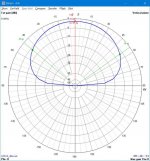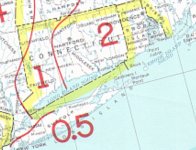Bought a LOG kit from LMK. 60 foot wire with transformer.
Setup as square in the yard, connected BNC to my IC705 with a 12” (yes 12 inches) rg316 jumper and heard/saw almost nothing on 20M, 15M, 12M, or 10M.
Even with preamp turned on in the 705 - basically useless. Just barely a few signals.
I compared to my 66’ EFHW and it heard more.
Are my expectations way off base here?
Granted I have crappy solar RFI from the neighbor, and the log was picking that up too.
I could turn the loop 90* to see if directionally it helps, but not expecting for much difference there.
Am I missing anything else in this setup?
Separately I already reached out to ARRL about helping me with solar RFI in the neighborhood. Thank you for the suggestion form another thread.
Setup as square in the yard, connected BNC to my IC705 with a 12” (yes 12 inches) rg316 jumper and heard/saw almost nothing on 20M, 15M, 12M, or 10M.
Even with preamp turned on in the 705 - basically useless. Just barely a few signals.
I compared to my 66’ EFHW and it heard more.
Are my expectations way off base here?
Granted I have crappy solar RFI from the neighbor, and the log was picking that up too.
I could turn the loop 90* to see if directionally it helps, but not expecting for much difference there.
Am I missing anything else in this setup?
Separately I already reached out to ARRL about helping me with solar RFI in the neighborhood. Thank you for the suggestion form another thread.
Last edited:






